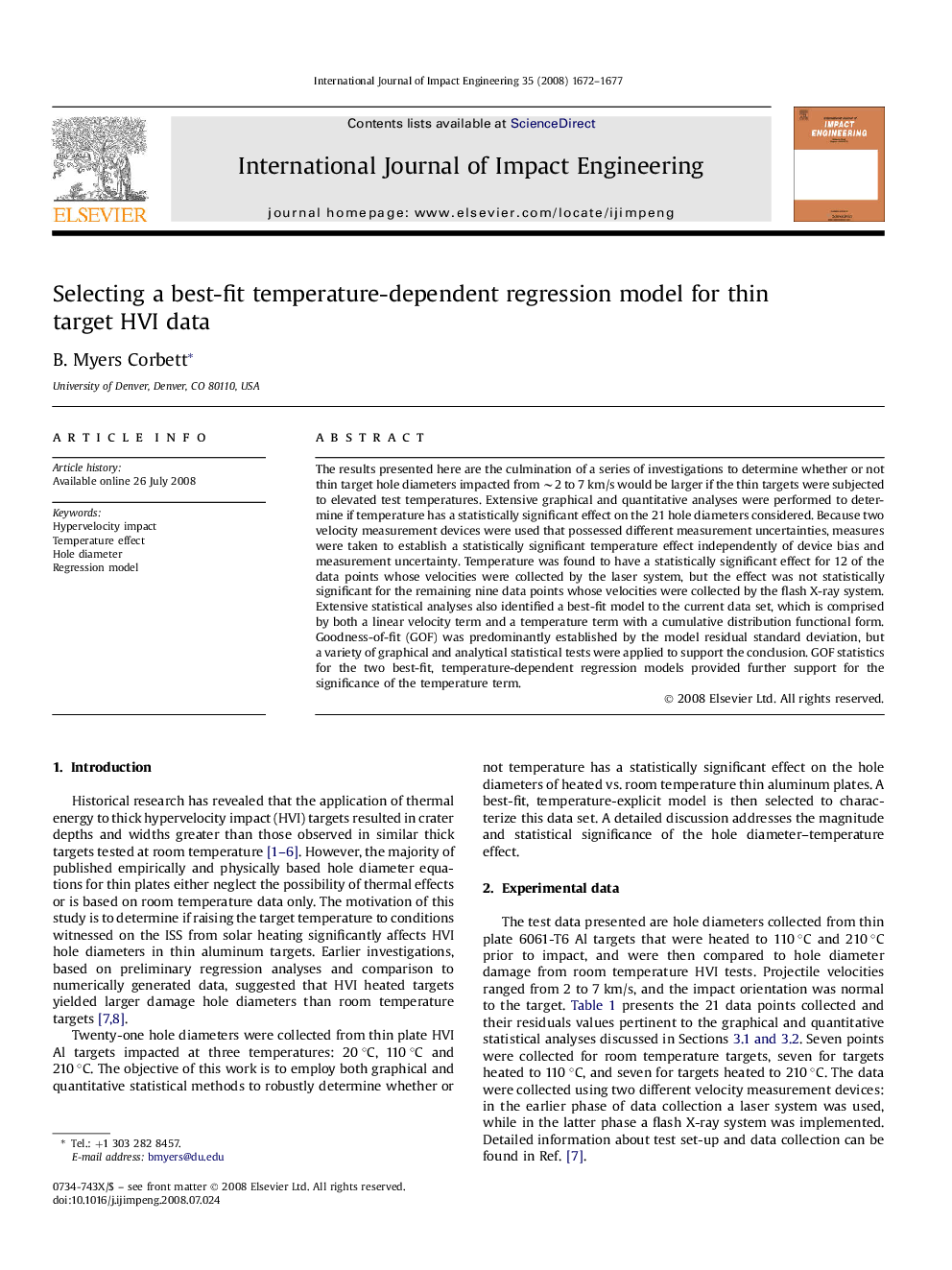| Article ID | Journal | Published Year | Pages | File Type |
|---|---|---|---|---|
| 779487 | International Journal of Impact Engineering | 2008 | 6 Pages |
The results presented here are the culmination of a series of investigations to determine whether or not thin target hole diameters impacted from ∼2 to 7 km/s would be larger if the thin targets were subjected to elevated test temperatures. Extensive graphical and quantitative analyses were performed to determine if temperature has a statistically significant effect on the 21 hole diameters considered. Because two velocity measurement devices were used that possessed different measurement uncertainties, measures were taken to establish a statistically significant temperature effect independently of device bias and measurement uncertainty. Temperature was found to have a statistically significant effect for 12 of the data points whose velocities were collected by the laser system, but the effect was not statistically significant for the remaining nine data points whose velocities were collected by the flash X-ray system. Extensive statistical analyses also identified a best-fit model to the current data set, which is comprised by both a linear velocity term and a temperature term with a cumulative distribution functional form. Goodness-of-fit (GOF) was predominantly established by the model residual standard deviation, but a variety of graphical and analytical statistical tests were applied to support the conclusion. GOF statistics for the two best-fit, temperature-dependent regression models provided further support for the significance of the temperature term.
